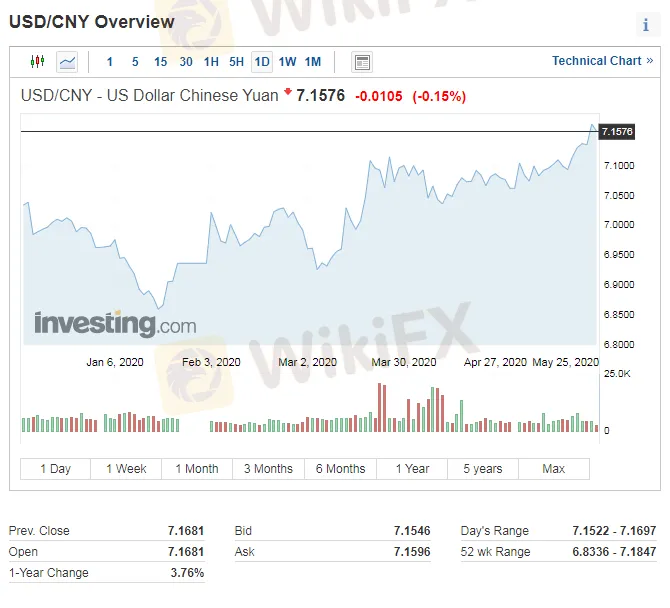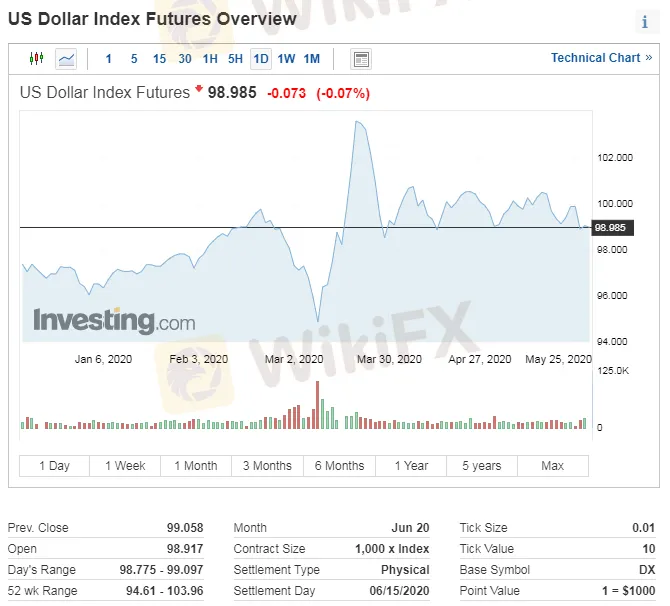简体中文
繁體中文
English
Pусский
日本語
ภาษาไทย
Tiếng Việt
Bahasa Indonesia
Español
हिन्दी
Filippiiniläinen
Français
Deutsch
Português
Türkçe
한국어
العربية
Analysis of RMB Depreciation
Abstract:The current exchange rate of RMB, whether onshore or offshore, has hit a low point of nearly 9 months.
The current exchange rate of RMB, whether onshore or offshore, has hit a low point of nearly 9 months. (May 28)
On May 27, after the offshore RMB fell below the 7.15, 7.16, and 7.17 barriers during trading hours, the decline further expanded in the night, falling below the 7.18 and 7.19 barriers to 7.196. The largest drop during May 27 and the early morning of May 28 was 500 basis points.

Actually the RMB exchange rate trend was mainly downward in May. Take offshore rate as an example, RMB slid to 7.1964 against the dollar on May 28, a 1.5% depreciation compared with the 7.1964 on May 28. The onshore RMB has depreciated by more than 1% from its price of 7.0659 on April 30.
Given the current situation, we have no difficulty in understanding RMB‘s depreciation. On one hand, the relationship between US and China has tensed because of the national security law over HK; on the other hand, Meng Wanzhou, HUAWEI’s CFO, met the “dual crime” standard according to Canada and failed to be released. The verdict is expected to largely affect the direction of Canada-China relations.
To be detailed, the main reason for the recent depreciation of RMB is that the US dollar index has remained high and fluctuated under risk aversion. At the same time, the depreciation of the exchange rate will also be a certain constraint on the further relaxation of short-term monetary policy. For example, in the past two days, the People's Bank of China has restarted the reverse repurchase, with the scale lowering than market expectations and the rate remains unchanged. However, considering that China's government work report has made it clear that the RRR cut and interest rate cuts will be pushed forward, and the interest rate will continue to fall. In the medium and long term, monetary policy is expected to remain loose.

Looking back, the offshore yuan was at 7.15 when USD/CNH grew amid aggravation of relations between China and the United States last year. That is, market pressure on the exchange rate was not as intense as before, although the PBOC weakened its support for the yuan.
This is a clear clue from the Chinese bureaucrats who intend to use a lower RMB exchange rate to support China's export competitiveness. The lower exchange rate has been the cause of American anger, and this time it will definitely remain the same.
Compared with many other currencies in developing countries, the Renminbi is more resistant to the dollar, having fallen by 1.8% so far this year. But for a long time, the RMB/USD rate will be kept within a certain range, and, the depreciation of the RMB against the US dollar is expected to attract more attention from politicians.
To sum up, the exchange rate is a very trendy thing, and in the long run it is also positively related to a country s share of the global economy.
Disclaimer:
The views in this article only represent the author's personal views, and do not constitute investment advice on this platform. This platform does not guarantee the accuracy, completeness and timeliness of the information in the article, and will not be liable for any loss caused by the use of or reliance on the information in the article.
WikiFX Broker
Latest News
SQUARED FINANCIAL: Your Friend or Foe?
Big News! UK 30-Year Bond Yields Soar to 25-Year High!
High-Potential Investments: Top 10 Stocks to Watch in 2025
Why Is Nvidia Making Headlines Everywhere Today?
Discover How Your Trading Personality Shapes Success
US Dollar Insights: Key FX Trends You Need to Know
FINRA Charges UBS $1.1 Million for a Decade of False Trade Confirmations
BI Apprehends Japanese Scam Leader in Manila
Bitcoin in 2025: The Opportunities and Challenges Ahead
Join the Event & Level Up Your Forex Journey
Currency Calculator






